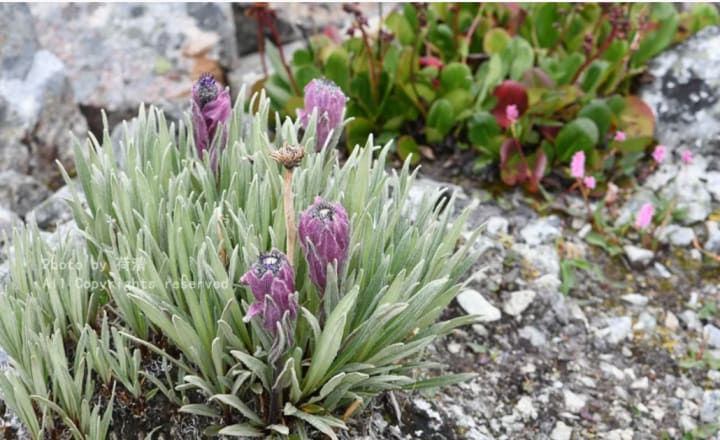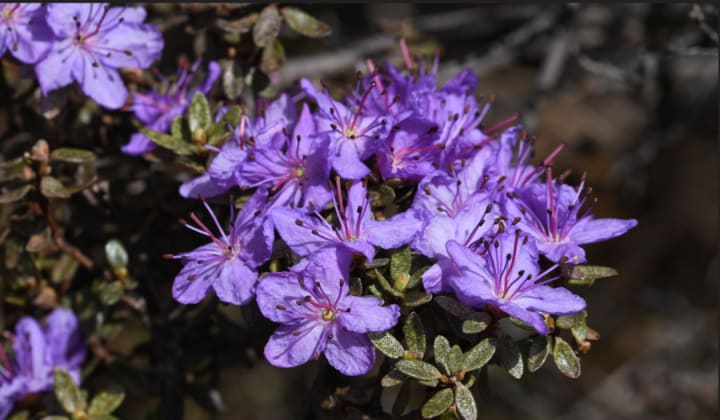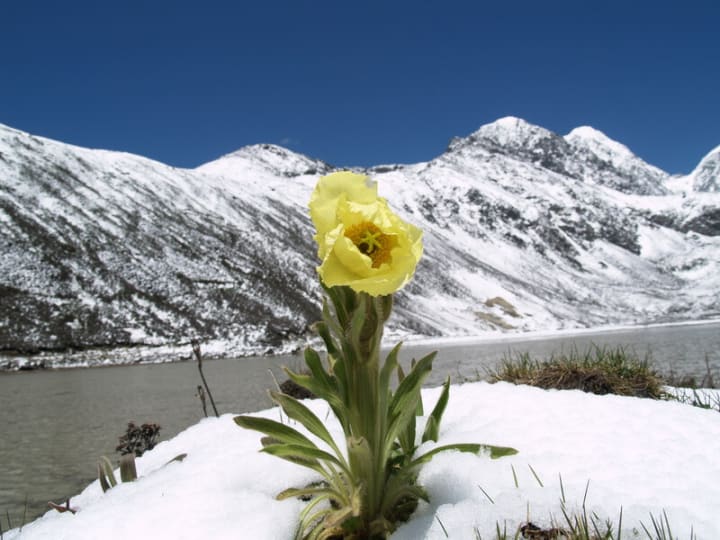Icy Wonderland, Why Do Plants Bloom Even in Snowy Conditions?
On a chilly winter's day, some plants defy the cold and burst into bloom. Among them are the plum blossom, winter jasmine, and rhododendron. Why do these plants bloom even in the midst of ice and snow?

The phenomenon of flowering, leafing, and fruit-bearing in plants is intricately tied to their environment. In the natural world, the primary purpose of a plant's flowering is reproduction, a crucial step in ensuring the perpetuation of its genetic heritage. Flowering at the right time is pivotal for plants to gain a competitive edge in the survival game. Remarkably, even plants that choose to bloom in the harshness of winter adhere to this fundamental rule.

Consider the case of plum blossoms and similar plants that have evolved to flourish in winter. Their early blooming and rapid fruiting are strategic responses to temperature fluctuations. By flowering ahead of the scorching summer heat, they increase their chances of successful reproduction. During the warmer seasons of spring, summer, and autumn, when temperatures are more favorable, the increased activity of insects and birds significantly aids in pollination. Intriguingly, research has illuminated the fact that even in winter, pollinators such as bees and moths remain active. While their populations may dwindle compared to the warmer months, there is also reduced competition from other flowering plants during the winter period. This unique ecological niche enables winter-flowering plants to achieve reproductive success.

The ability to flower in cold environments isn't limited to plants like plum blossoms; it extends to high-altitude regions where species like snow lotus, edelweiss, and rhododendron also bloom amidst snowy conditions. These resilient plants have evolved specialized adaptations to thrive in low-temperature environments. They have developed structures akin to natural greenhouses, which act as protective shields against freezing temperatures, safeguarding their delicate flowers and ensuring the continuity of their populations. Additionally, they augment their levels of substances such as unsaturated fatty acids and soluble sugars or induce the production of low-temperature antifreeze proteins. These mechanisms shield their cellular membranes from damage and avert metabolic disruption caused by the cold.
However, it's crucial to note that colder isn't necessarily better when it comes to flowering. Whether it's winter-blooming plants or those found in high-altitude regions, there is a consistent pattern regarding the timing of flowering. Typically, flowers begin to bloom when temperatures experience a slight rise during early or late winter, rather than during the harshest depths of winter. In fact, even for plants like plum blossoms and winter sweets, which brave the winter chill to bloom, extremely low temperatures can deter their blossoming. Furthermore, to mitigate the risk of frost damage, these plants have evolved a clever strategy of flowering before they leaf out, as leaves are less resilient to cold than the hardy flowers.
Many of the winter-blooming plants we observe in northern regions trace their origins to warmer southern climates but have gradually migrated northward due to human intervention. Scientists have delved into the intricate mechanisms governing plant flowering for over a century. The timing of flowering serves as a barometer of a plant's ability to adapt to its external environment. Temperature and daylight duration are the principal environmental factors influencing the seasonal flowering of plants. Some plants necessitate exposure to chilling temperatures as a prerequisite for initiating the flowering process. Research has unveiled the fascinating ability of plants to sense seasonal variations in environmental cues, such as temperature and daylight duration, triggering the production of a vital protein known as "florigen" within their physiological framework. This protein acts as a catalyst for flower bud differentiation and eventual flowering.
With an increasingly profound comprehension of the intricacies of plant flowering regulation, we now possess the knowledge and tools to manipulate flowering timings through various techniques. These include the adjustment of growth conditions and the application of plant hormones. Furthermore, through meticulous molecular screening and selective breeding, we continually develop new plant varieties capable of blossoming even in the heart of winter.
About the Creator
tim8888
Hello, I'm a passionate writer and explorer who loves creating innovative content. I hope you enjoy my articles. Feel free to reach out if you have any questions or want to chat. Thanks for visiting!
Enjoyed the story? Support the Creator.
Subscribe for free to receive all their stories in your feed. You could also pledge your support or give them a one-off tip, letting them know you appreciate their work.







Comments
There are no comments for this story
Be the first to respond and start the conversation.